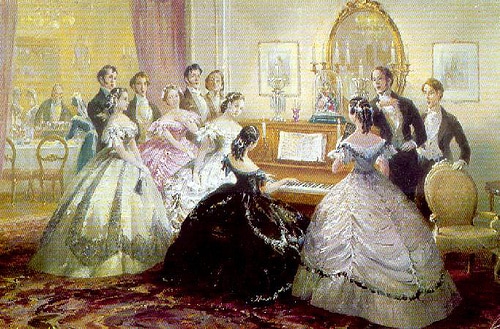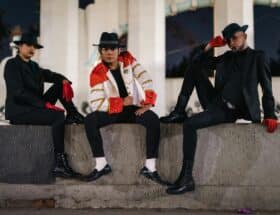By Pauline Weston Thomas for Fashion-Era.com
Do It Yourself Victorian Entertainment
The Victorians were particularly good at being entertained and entertaining others or themselves. Their performances at home were amateur, but they entered the spirit of do-it-yourself family parties with elaborately organised entertainment.
The hosts and guests joined in charades, dancing, games, fireworks, magic lantern shows and piano sing songs making their own lively entertainment.
Music Groups
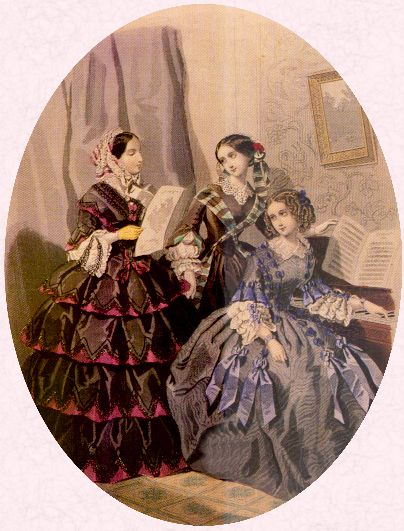
Music was one of the greatest pleasures with thousands of people playing musical instruments at home for pleasure. Even today people pick up the best student flutes and instruments so they too can entertain others and themselves.
Most cities, towns and villages had a Glee club, village band, music society or choir.
The Church orchestra came in useful for more than just hymn playing and in Thomas Hardy's 'Under The Greenwood Tree' you can read about how music was the common connection to bring courting couples together.
Music groups sprang up everywhere and by 1857 'The Halle Orchestra' of Manchester was compared to 'The London Philharmonic Society'.
Music helped to pass winter evenings and all governesses were supposed to teach this refinement to young ladies. Dancing was closely associated with musical ability.
Dancing
Dancing was a living tradition with local variations. Both Victoria and Albert were musical and they influenced the popularity of music and dancing in Victorian homelife and society.
The Queen gave evening concerts at Buckingham Palace and Windsor Castle. In 1840, the Prince upgraded the Queen's Private Band into a good string orchestra. Mendelssohn often performed for them. Mendelssohn had a high opinion of the Prince's musical ability.
Waltz And Polka
The Victorians loved dancing. Johann Strauss the elder (1804-49), as part of the coronation festivities had brought the new Viennese waltz to England.
Queen Victoria thought Prince Albert waltzed beautifully. Newer square dances were popular as were older dances such as the Sir Roger De Coverley, jigs, hornpipes, country dances, flash jigs. Then in 1840 everyone started to do the Polka which was sweeping Europe among rich and poor.
Dancing at home, in assembly rooms, in taverns, on the village green, at places of amusement, such as Vauxhall and Cremorne Gardens and at Royal residences was very popular. The lively simple Polka dance was popular with the labouring classes.
You are reading an original Victorian Recreation article by Pauline Weston Thomas at www.fashion-era.com ©
Vauxhall
Well bred men also enjoyed haunting Vauxhall and Cremorne Pleasure Gardens. They were never frequented by well bred young women.
Vauxhall in London first opened in 1661 and after a fashionable existence in the eighteenth and early nineteenth centuries lost any respectability it ever had by the Victorian era. Young men still ate, drank, danced, listened to music and chased women down the Dark Walk.
They still watched firework displays, pantomimes and balloon ascents, but once the gentry stopped visiting Vauxhall, it soon lost ground and was closed in 1859.
Cremorne Gardens
Cremorne Gardens in Chelsea were new. They had been transformed from a farm into a pleasure garden in 1843. It had a monster dancing stage and landscaped attractions with discrete pavilions in dark corners. It also had magnificent gas lighting in public parts. Any women seen in illustrations after 1850 was very likely wearing the colourful gaudy dress of the prostitute and was likely accompanied by middle or upper class gents who could afford their services.
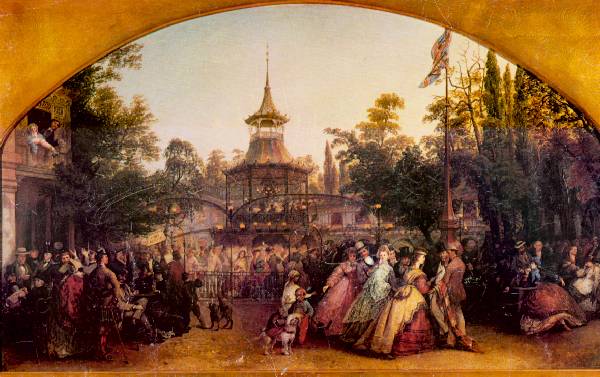
Fairs
Fairs were held all over Britain from city to village green, but the first special fair of the Queen's new reign was held in Hyde Park. Every kind of article from ribbons to pies was sold.
The Victorians loved the macabre and looking at freaks from fat men, fat women to the contrast of living skeletons, two headed ladies and for a time the so called Elephant man to mind reading dogs and performing horses. The crowds loved them all.
Theatres
To stay solvent the two oldest theatres, Covent Garden and Drury Lane presented all sorts of concoctions as well as regular drama.
They put on farces, melodramas, operettas, trained horse and dog acts, harlequinades, rope dancers, bits of Shakespeare livened up with music, all items that could be as likely seen at a fair too. No theatrical production consisted of one work, but of various three or four hour acts. Actresses were often fashion leaders and it was notoriously difficult to get actresses to appear in historical costume.
The Music Hall
Victorian prudery inhibited many Playwrights because of the outwardly respectable ideas that were common. In contrast the Music Hall with its double entendres drew the less attractive violent fringe of theatre audiences. This Victorian institution catered chiefly for the working man and lasted to the end of World War I when it was replaced by the cinema.
The Society Novel
The society novel existed for new middle classes who might have mingled with the aristocracy. It went into exhaustive detail on dress, food, furniture, stately homes, conversation and behaviour in every situation. It created innocent heroines where evil must be punished and virtue rewarded.
Singing
Singing especially of the romantic ballad was popular enough for 700 publishers to make a living printing ballad broadsheets.
Patriotic songs like Rule Britannia and comic songs like the Policeman were enjoyed too. Songs from poems like 'Come Into the Garden Maud', 'Sally in our Alley' and 'Cherry Ripe' all gave pleasure.
The Derby Day Races
All classes mixed at Derby week which was both a fair and a race week. Sellers of food and drink with trays slung round necks catered for the masses.
Derby Day was held at Epsom racecourse and was a wonderful holiday in May or sometimes June. Weather could be fine and sunny or wet and if not too bad the races went ahead.
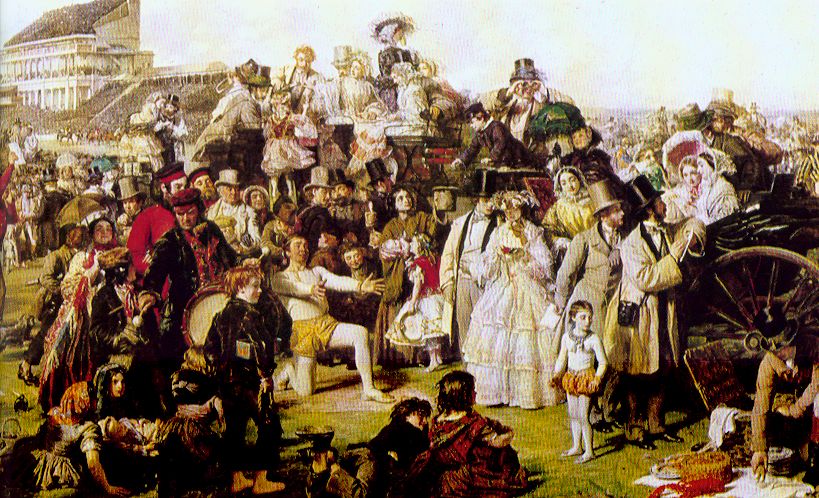
Then in 1859 to amazement snow fell before and during the race. This has been the only time in history that snow has fallen during the Derby.
Racing, the sport of kings, was much loved by the masses. The races gave the poor an opportunity to enjoy their favourite pastimes of skittles, sparring and boxing.
You are reading an original Victorian Recreations article by Pauline Weston Thomas at www.fashion-era.com ©
Pastimes, Sports and Fitness
In the early period indoor games ranged from whist, cribbage, bridge and patience. Men could enjoy more outdoor sports than women especially real tennis, shooting, rowing, billiards, cricket, fishing, and deer stalking. Later women joined some of these pastimes.

Early Victorian gentlewomen were more limited and played croquet and skated. Everyone walked and promenaded.
They were graceful walkers with good deportment. They hunted, rode horses and mastered archery. A few would mountaineer despite the cumbersome nature of wearing crinolines or bustles.

Between 1870 and 1900 sporting activities for both sexes grew rapidly. Women soon played golf and cricket, sailed, swam and bathed publicly.
Once the bicycle arrived in 1881 cycle clubs for enthusiasts formed and it was a wonderful way for young couples to socialise with limited supervision.
The special clothing that women needed for these sports evolved from reform dress first initiated by Amelia Bloomer around 1850.
Sports dress is discussed in detail in its own sections under Rational Dress,Early Swimwear, and Fitness Fashion.
